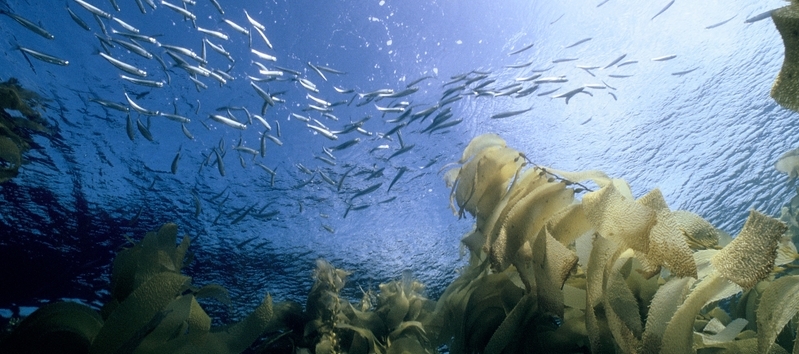Making thoughtful decisions about individual marine activities, like fishing, may help to benefit other activities, from tourism to transportation to traditional uses

Big Picture
The oceans are increasingly crowded. Long-standing activities like fisheries and oil extraction are attempting to coexist with newer activities such as wind and wave energy. Management actions targeted at one set of activities nearly always have consequences for others. For example, fisheries remove the biomass of many species from the ocean. This activity influences the availability of prey or abundance of predators for unharvested species remaining in the sea, in addition to affecting the attractiveness of ecosystems for tourism and recreation activities and their biodiversity-based existence value.
This work strives to answer the question, are there management actions that can provide adequate benefits to one marine sector without impinging heavily on other marine sectors and crossing ecosystem thresholds? This research is being carried out in Haida Gwaii, where the collapse of Pacific herring in the early 1990s has reorganized the social and ecological systems surrounding them, and Hawai'i, where changes in benthic communities can have far-ranging effects on animals, water quality, and related socioeconomic benefits.
Why we are doing it
In both Haida Gwaii and Hawai'i, our goal is to meet managers where they are now—largely operating under the auspices of sectoral management—with science that can help them to make informed decisions about how to improve ecosystem-level outcomes that extend beyond their conventional focii. Ideally, we will be able to provide insights into how one ocean activity can thrive while avoiding ecosystem thresholds that would prevent other ocean uses from flourishing.
How we are doing it
We are:
- Scoping single sector problems and building interaction webs around focal ecosystem components via literature review and possibly expert interviews (Bayesian Belief Networks)
- Gathering ecological datasets appropriate for examining ecosystem thresholds and intra-/inter-sectoral conflicts.
- Determining the range of acceptable conditions for single-sector indicators, where the range is bounded by avoidance of ecosystem thresholds and intra-/inter-sectoral conflicts
- Developing models to evaluate alternative spatial management strategies intended to avoid ecosystem thresholds and intra- and inter-sectoral conflicts, and compare the costs and benefits of spatial vs. non-spatial solutions
What’s next
We are conducting an analysis to understand how changes in fishing and climate influenced the collapse of Pacific herring populations in Haida Gwaii. We are also working with stakeholders in Haida Gwaii to develop interaction webs that describe how the collapse of Pacific herring may have affected the broader social-ecological system.
Outcomes
The case studies provides an ecosystem perspective on the costs and benefits related to individual management actions. Our hope is that these insights will allow individual ocean use sectors to avoid negative consequences for other sectors.
Building Blocks
We are comparing sectoral outcomes and ecosystem trade-offs associated with decisions in individual ocean use sectors to those that accrue from management actions coordinated across ocean use sectors (ecosystem service trade-off models).
Lead
Jameal Samhouri and Crow White
Anticipated Completion
Fall 2016
Learn more about our other Research Activities with the Ocean Tipping Points project.
